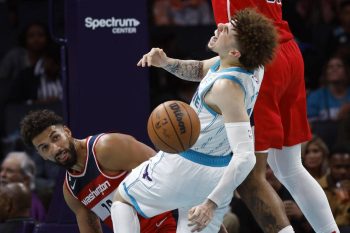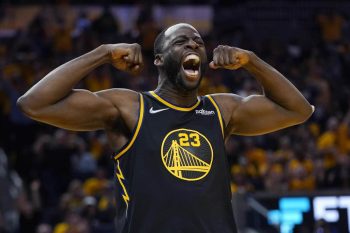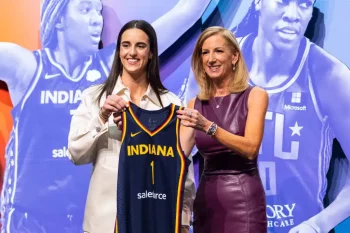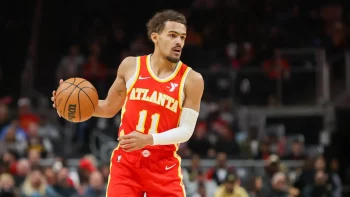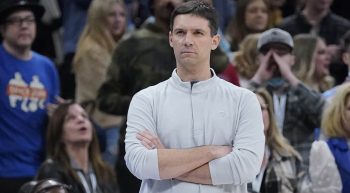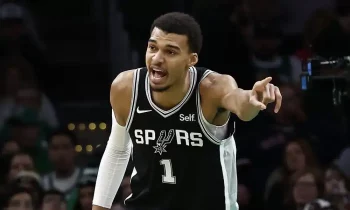NBA
Who Should the Lakers Take with the Seventh Pick?
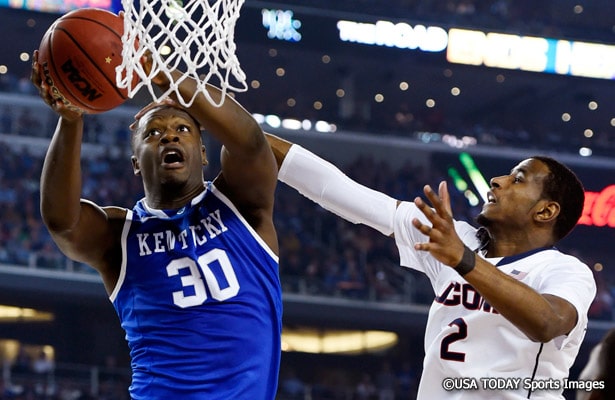
The Los Angeles Lakers are set to draft a player with a top-20 pick for the first time since picking Georgia Tech point guard Javaris Crittenton with the 19th pick in 2007. Back then, the Lakers were coming off a 42-40 season, and Kobe Bryant was demanding to be traded. However, the Lakers, as they seemingly always do, managed to trade for another star player (Pau Gasol), keep Bryant and turn the team around immediately.
Things are a little different this time, however. The Lakers are coming off their second-worst season in franchise history (27-55), Bryant is coming off of two major injuries over the last year, the new Collective Bargaining Agreement is more restrictive, the team is searching for a new head coach and the roster is in complete flux. The Lakers used a significant chunk of its cap space to sign Bryant on for two more seasons before calling it a career, and now the team is in an odd position where there is an urgency to win now, but to also build for the future when Bryant is gone.
The Lakers are constantly being linked to players like Kevin Love, Kyrie Irving and Carmelo Anthony, however, the Lakers lack the assets to execute a trade for these players. There are other teams that can make more competitive offers and have more complete rosters to compete with.
Fortunately for the Lakers, they have the seventh pick in the upcoming draft, which is loaded with talent. The Lakers were hoping to secure a top-three pick at the NBA lottery, but all the luck belongs in Cleveland these days when it comes to the lottery. The good news is that there will be solid options to pick from at seven.
Here we examine the players that are most likely to be available, and which would be the best choice for the Lakers as they rebuild their roster for next season, and the long-term.
1. Marcus Smart (Point Guard, Oklahoma State University, 19 years old)—
After having a very strong freshman season, and projecting as a top two pick in the 2013 draft, Smart decided to return for his sophomore season at Oklahoma State University. In his sophomore season, Smart posted 18 points, 5.9 rebounds, 4.8 assists, and 2.9 steals per game.
Smart is a strong, athletic and skilled player. He measured well at the NBA Combine, standing 6-3 ¼ in shoes, with a 6-9 ¼ wingspan and weighing in at 227 pounds. He uses his size and strength well in transition, and is very good at cutting into the interior of opposing defenses and finishing at the rim. His jump shot is a work in progress however (29.9 percent from beyond the arc), and it is something he will need to continue working on moving forward.
Also, Smart is a fiery competitor and will not back down from veteran guards on the defensive end. He has the physical tools to compete at a high level in his rookie season, and has room to develop into one of the most physical, imposing point guards in the league. In a league where almost every team has a standout point guard, the Lakers would do well to take on Smart, who is a nice package of ball-skills and physicality to contribute now, and the upside to become one of the best point guards in the league.
There is a question of character, however, as Smart shoved a Texas-Tech fan that was heckling him. While it is seemingly unfair to ask players to not respond in some way to the terrible things that fans sometimes say, it is simply unacceptable for a player to get into a physical altercation with a fan.
Still, Smart is a complete package, and with so many skilled point guards in the league today, the Lakers need a point guard to build around. With two seasons learning from Kobe Bryant, Smart could end up as a major asset for many years in Los Angeles, though he may be off the board by the time is their turn to pick.
2. Julius Randle (Power Forward, University of Kentucky, 19 years old)—
Randle is a versatile forward who showed a well-rounded skill-set in his one and only season at Kentucky. Randle averaged 15 points, 10.4 rebounds, 1.4 assists, 0.8 blocks and 2.5 turnovers per game.
When watching Randle play, it is easy to see why some have compared him to Memphis Grizzlies power forward Zach Randolph. Like Randolph, Randle is left-handed, can score the ball well around the rim, is a strong rebounder and has a good feel for the game. However, Randle is much more explosive and agile than Randolph. In fact, Randle is deceptively good in transition, a result of his above average ball-handling ability for a big man.
In addition, Randle’s combination of strength and quickness allows him to get to the rim often, and finish through contact. He is also very effective using pump fakes, and spin moves to get just enough space to get shots off around the rim against longer defenders. One of Randle’s most effective moves is when he fakes a spin to his left, and turns back to his right, finishing with a soft hook shot with his left hand. Again, there is a reason so many people compare his game to Randolph.
However, what separates Randle from Randolph is that his physical tools allow him to be a more effective defender. It took Randolph many years in the NBA to become an above average defender. Randle is not great on the defensive side of the court yet, but he has the physical ability to be much more effective than Randolph has been the majority of his career. Randle measured well at the NBA Combine, standing 6-9 in shoes, logging a 7-foot wingspan, and weighing in at 250 pounds. He is not a natural shot blocker, but Randle can body up big power forwards well, and still has a lot of room to improve with more experience.
This past season, the Lakers had Pau Gasol, Jordan Hill, Wesley Johnson, and Ryan Kelly take up the majority of minutes at power forward. Gasol may leave in free agency this summer, Hill made it clear he is open to joining another team as a free agent, Johnson was inconsistent, and Kelly had a promising rookie season, but is far from ready to take over as the starter at power forward. Randle would be a solid backup off the bench to fill in for Gasol (if he is signed to a new contract), or could compete as a starter throughout the season. There would be growing pains, but Randle is a relatively polished offensive player, and an all-around competitor. If Randle does drop and is available when the Lakers are up to pick, they would be getting a big time prospect, and a big man to start building around in the future.
3. Noah Vonleh (Power Forward/Center, Indiana University, 18 years old)—
Vonleh is another promising big man. He has good size and a massive wingspan that helps him on both sides of the court. In his one and only season at Indiana, Vonleh posted 11.3 points, nine rebounds, and 1.4 blocks per game.
Offensively, Vonleh has a developing and promising game. He is effective on the interior, showing the ability to finish well around the rim, even when defenses are swarming him. He also can run the court fairly well. He also attacks the offensive glass aggressively, often getting second chance points on put-backs around the rim. In addition, he can stretch the court and make shots from beyond the arc. While this isn’t the focal point of his offensive game, it can be a major weapon on the next level. Chris Bosh added three point range as a way to help spread the floor for LeBron James and Dwayne Wade so they could attack the rim. With solid mechanics, and more practice, Vonleh should similarly be able to spread the floor in the NBA.
Defensively, Vonleh can psychically match up with strong opponents, and can alter and block a lot of shots. He doesn’t jump extremely high, but his long arms make him tough to to score around. He has the strength to body up bigs down low, and the mobility and length to disrupt interior passing lanes.
With no big man to currently build around, the Lakers would be getting a big man with huge offensive and defensive potential. Despite his three point range, and underrated ball skills, Vonleh is still very raw. As he gets more experience, he will likely become a more skilled defender, and put more pressure on defenses with his interior scoring ability. However, it may be unrealistic to expect him to make a significant difference for his team in his rookie season as he will struggle at times against NBA size and length. Still, Vonleh is an investment for the future, and could fill in off the bench in his rookie season.
4. Aaron Gordon (Small Forward/ Power Forward, Arizona, 18 years old)—
Any conversation about Aaron Gordon tends to start with his athleticism. At the NBA Combine, Gordon measured 6-7 ½ without shoes (likely 6-8 ½ to 6-9 with shoes), logged a 6-11 ¾ wingspan, and weighed in at 221 pounds. In his one and only season in Arizona, Gordon registered 12.4 points, eight rebounds, two assists, and one block per game.
Gordon is an elite athlete. He has a quick first step, is very explosive, and is very effective at catching and finishing lobs at the rim. This is why Gordon draws some comparisons to Blake Griffin, who is also an elite athlete at the forward position.
Gordon uses his athleticism effectively on both sides of the ball. He uses his quickness to stay in front of wing players, and has the size and strength to body up bigs in the post. This versatility is especially valuable since Gordon still needs to add a little weight to really be able to guard some of the bigger front court players in the NBA. Still, Gordon works hard on defense, and is surprisingly good at contesting shooters on the perimeter. In addition, Gordon is a very strong rebounder. He relies on his athleticism a little too much, sometimes missing easy box-outs, but he competes hard on the glass.
Offensively, Gordon is a weapon in transition. He runs the floor well and often leads the break himself, either finishing at the rim, or setting up a teammate. Also, he is an underrated ball handler, which allows him to drive the ball from perimeter to the rim in halfcourt situations. While his jump shot is not a major weapon yet, Gordon is a hard worker and will likely develop more consistency rather quickly.
One of the questions surrounding Gordon is what position he projects to play long-term at the next level. He is not a good enough shooter yet to play small forward, but has the ball skills and work ethic to potentially someday. However, Gordon may find that his natural position is at power forward and look to add more weight in order to bang down low with the bigger power forwards and centers in the league.
Gordon would be an especially good fit for the Lakers long term. He is a hard worker, very young, has huge upside, is a good team defender and is unselfish. He doesn’t have the length of Vonleh, or the same scoring touch around the rim as Randle, but Gordon has the athleticism and work ethic to one day be one of the best two-way forwards in the league. When Blake Griffin joined the Los Angeles Clippers, his relentless work ethic rubbed off on the other young players around him, especially DeAndre Jordan.
If the Lakers decide to rebuild through the draft, as more teams are doing these days, Gordon would likely lead the young core by example, and would motivate his teammates to work as hard as he does, similar to Griffin. Gordon is the most likely of the players mentioned so far to be available at seven.
5. Dario Saric (Small Forward/Power Forward, Cibona (Adriatic League), 20 years old)—
Saric is an international player with great versatility. At 6-10, Saric is a gifted offensive player, and has a natural feel for the game. He currently plays for Cibona of the Adriatic League. This season he averaged 16.7 points, 9.7 rebounds, and 3.2 assists. Cibona won the league championship, led by Saric, who won MVP of the finals.
Saric is a good ball-handler, allowing him to lead fast breaks, and break down defenses from the perimeter in halfcourt sets. He has an improving jump shot and post-game, which altogether makes him one of the most intriguing prospects in the draft.
In addition, Saric is a good passer, often setting up his teammates for easy finishes at the rim. He has shown flashes of point-forward potential in the NBA, which is often a huge asset for teams (think of the impact Andre Iguodala and Danilo Gallinari often have as play-makers).
Where Saric may have problems in the NBA is on the defensive side of the court. Saric does not currently have the strength to stop the bigger forwards in the NBA, and may struggle against some of the quicker wings. Still, Saric has good timing and always competes hard defensively. He uses his length to contest shots and crash the boards. However, Saric played at power forward a lot this year, and it is difficult to envision him slowing down the better post players like Zach Randolph, Tim Duncan or Blake Griffin.
If the Lakers select Saric at seven, it will be an investment for the future. It is unclear when Saric will actually make the move to the NBA, but the long-term payoff could be huge. With pro level experience, a great feel for the game, and a huge variety of skills, Saric could be a major piece in the near future.
Wild Card: Dante Exum (Point Guard/ Shooting Guard, Australian Institute of Sport, 18 years old)—
Dante Exum would be at the top of this list if it were at all likely that he would be available when the Lakers pick. However, the further we move through the draft process, the more it seems like Exum is likely be a top-five pick.
At the NBA Combine, Exum measured in at 6-6 in shoes, with a 6-9 ¼ wingspan. His size is solid for a shooting guard, and excellent for a point guard. While he can play both positions, teams are focusing on his future potential at the point guard position.
Exum has shown that he can get to the rim and finish using his length and athleticism. Exum said he tries to mimic Derrick Rose in the way he attacks the rim, which should excite general managers. In addition, Exum is a solid passer, often setting up teammates by putting pressure on opposing defenses by attacking the basket to create opportunities. He is perhaps most dangerous when he is leading the fast break, as he can either use his athleticism to finish at the rim, or dump off to a teammate under the basket.
Also, Exum’s defensive potential is huge. He needs to add more muscle to his thin frame, but that will happen naturally as he physically matures. His length and athleticism will allow him to stay in front of the quicker point guards, and body-up the bigger ones.
If Exum drops, which is looking less and less likely, the Lakers need to pick him. He would be a major piece to build around moving forward, and would likely end the rumors about the Lakers making a play for Kyrie Irving. Some project that Exum could one day be the biggest star to come out of this draft, which is saying a lot with players like Andrew Wiggins, Joel Embiid, and Jabari Parker in the mix. With Kobe Bryant set to retire soon, the Lakers need to swing for the fences to find the next big star in Los Angeles, and Exum may be the best shot at that, if he falls in the draft.
The Lakers have a lot of options heading into the draft, including trading the pick for an established star, if the opportunity presents itself. However, the Lakers need to start preparing for the long-term and life after Kobe, as winning a championship in the next two years does not seem realistic. As of now, Smart and Randle seem like the best case scenarios for the Lakers. Both are big time prospects that can contribute now, and be cornerstones for the Lakers moving forward. After that, Vonleh, Gordon and Saric are nice pieces that could become big time players in the future. Exum is the dream scenario, but it just does not seem likely that he stays on the board long enough to land in Los Angeles. Fortunately for the Lakers, whoever they pick will likely have a big impact now, or in the near future.
